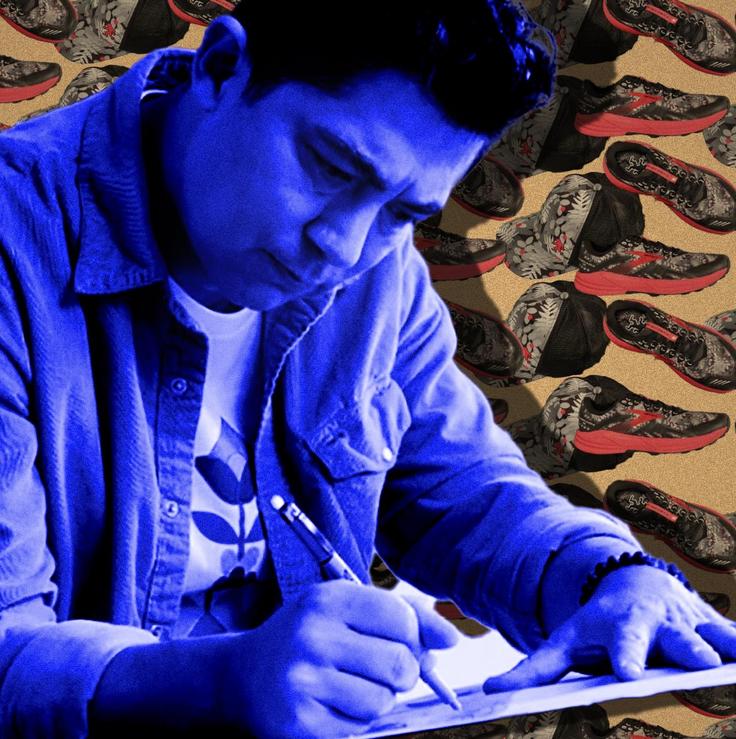The Sasquatch, or Bigfoot, is a beloved figure of American lore. But for Louie Gong, a Seattle-based artist who was raised in the Nooksack tribal community, the creature has become an ambassador of his culture — one that is helping him reclaim a skewed perception of his community, pushed by outsiders, for decades.
For many Indigenous communities of the U.S. and Canadian Pacific Northwest, the Sasquatch is less about pondering the existence and wildness of a towering primate humanoid, and more about what it represents: a portal to spirituality, a symbol of emotional transformation, and a harbinger of good luck.
See, cities such as Seattle have aligned themselves with a romanticized notion of local Indigeneity in order to lure tourists. For example, the city stole totem poles from Alaska and brought them to its public spaces, despite the fact that the local Coast Salish people never actually made totem poles. At Pike Place, one of the most popular tourist attractions in the city, local groups have been trying to get two misleading totem poles removed for years.
In cases like these, cultural erasure can take on new form, but have the same treacherous effects. And so for Gong, the Sasquatch is a vehicle for truth.
On a mission to preserve the often overlooked art of the Coast Salish people, Gong recently partnered with Brooks Running to design limited-edition shoes crafted with Coast Salish design, which incorporates circles and crescents to form a larger shape. In this instance, the Sasquatch is his muse. Like his own community, they are resilient but largely misunderstood.
Gong tells me that local governments have been complicit in the erasure of Coast Salish art for a long time. Indigenous religion was actually illegal for a majority of the 20th century because it was deemed “anti-Christian.” This, as you can imagine, had a devastating impact on the community’s ability to perpetuate and share important traditions.
Gong, who is 48, is part of a generation still reeling from the residual (and current) effects of discrimination against and appropriation of Indigenous cultures, but he’s doing the work to reclaim the true history of the Pacific Northwest. The inspiration for his work involves revitalizing what has been flattened and highlighting important aspects of Indigenous lifestyle that can actually teach us a lot about ourselves and the land we inhabit.
Gong’s collaboration with Brooks Running was particularly personal to him because he has always been drawn to how a person’s footwear helps express their identity. He tells me that when he was younger, he would go into stores and feel that none of the shoes resonated with him. So he started to draw his own designs on canvas shoes. The first was an outline of paws drawn over a pair of plain gray Vans. People loved them, so he decided to start his business, Eighth Generation, and sell them.

Gong tells me that he chose to portray the Sasquatch for pieces in the Brooks collaboration because, in his culture’s iteration of the story, the Sasquatch is a shapeshifter that transforms into plant. Shapeshifting and fluidity are themes that interest Gong, as someone of mixed Chinese and Indigenous heritage. He explains how the American urge to categorize things — by race, by “true” or “false,” by black or white — is something that he, the Sasquatch and Indigenous culture all resist.
“In tribal communities, we don’t have the same expectations about whether something should be real or scientifically provable for it to be part of our lives,” Gong tells me.
That resonates. We don’t need to meet a Sasquatch or see them physically in order to believe that they can teach us important lessons about how we are all shapeshifters who cannot be defined by binary systems. The Sasquatch, as an entity, encourages us to be curious and ask questions, to listen and to honor people’s articulations of themselves, even if it turns out they are not who we thought they were.

